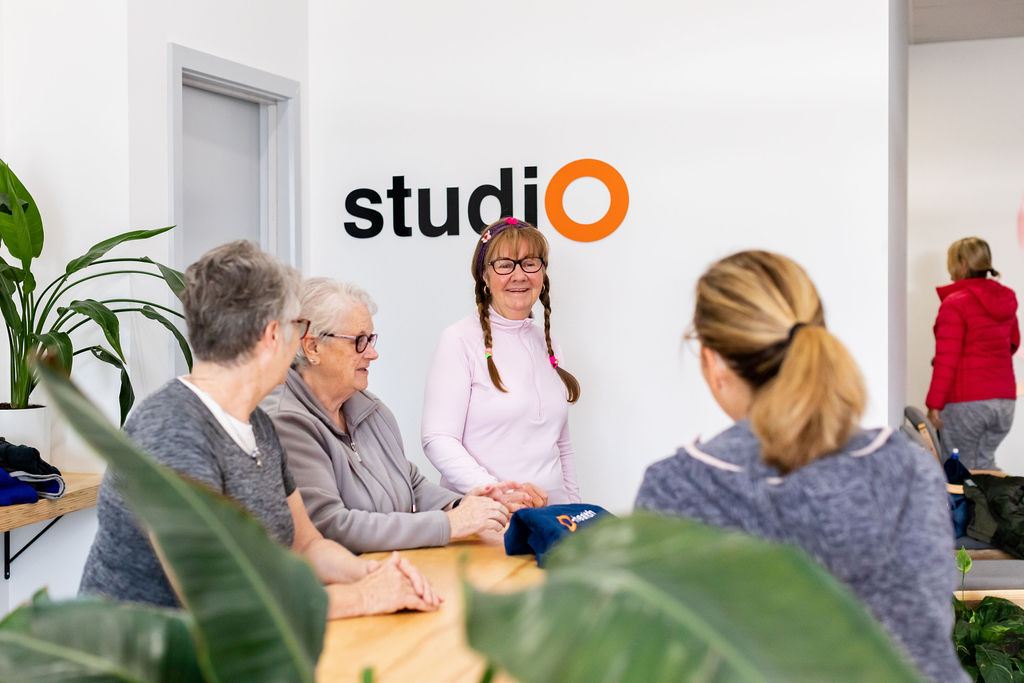Osteoarthritis (OA) affects millions of people worldwide, including 1 in 10 Australians. It’s a leading cause of joint pain, stiffness, and difficulty with everyday activities. While living with OA can be challenging, there’s one proven solution that stands out: exercise.
At O-health, we’re passionate about helping you move better, feel stronger, and live life to the fullest. Here’s why exercise is at the core of OA management—and how our team can support you.
What is Osteoarthritis?
OA is a joint condition caused by abnormal remodelling of joint tissues. Contrary to outdated ideas of “wear and tear,” OA involves an imbalance between cartilage degeneration and regeneration, often driven by mechanical stress, inflammation, or other factors.
While OA is more common as we age, it’s not a normal part of aging and can affect people as young as 45. The good news? Cartilage remains adaptable throughout life, and exercise is one of the most effective ways to keep it healthy.

Why is Exercise Key for OA?
Exercise is safe and effective for managing OA at any stage. Here’s how it helps:
- Nourishes Joints: Movement delivers nutrients to cartilage, promoting regeneration.
- Strengthens Joints: Targeted exercises build muscle around affected joints, reducing stress and pain.
- Improves Mobility: Enhanced range of motion makes daily tasks easier.
- Reduces Pain: Regular movement stimulates your body’s natural pain-relief mechanisms.
- Boosts Overall Health: Exercise supports cardiovascular health, bone density, and mental wellbeing.
The best approach combines strengthening exercises with mobility and endurance training to provide long-lasting benefits.
OA-health: Group Classes Designed for You
At O-health, we offer OA-health group classes tailored specifically for people managing or at risk of osteoarthritis. These sessions are designed to:
- Improve Strength: Build muscle to support your joints and reduce pain.
- Enhance Mobility: Increase flexibility and movement confidence.
- Support Long-Term Health: Help you stay active and independent for longer.
Our classes are supervised by trained professionals to ensure your exercises are safe, effective, and tailored to your needs. Whether you’re new to exercise or looking to build on an existing program, OA-health is the perfect way to stay motivated and see results.
Who Can Benefit from Exercise for OA?
Exercise isn’t just for those already diagnosed with OA—it’s also an effective way to reduce your risk of developing it. Our services are ideal for individuals:
- Managing joint pain or stiffness.
- Recovering from injury or surgery.
- Looking to improve strength, mobility, or overall fitness.
- Preventing future joint issues by staying active.
How to Get Started
At O-health, we make it easy to take the first step toward better joint health. Here’s how we can support you:
- Book an Assessment: Meet with one of our physiotherapists or exercise physiologists to discuss your goals and design a personalised program.
- Join Our OA-health Classes: Enjoy the benefits of group exercise in a supportive and motivating environment.
- Commit to Movement: Start with simple, tailored exercises to improve your strength, flexibility, and confidence.
In Summary
Osteoarthritis doesn’t have to hold you back. With the right exercise program—tailored to your needs—you can reduce pain, improve mobility, and regain confidence in your movement. At O-health, our team is here to guide you every step of the way.
Call us on 02 6021 2777 to book your appointment or learn more about our OA-health group classes. Let’s move better together!
References
- Arthritis Australia. (2025). Exercise and Arthritis.
- Hunter, D. J., & Bierma-Zeinstra, S. (2019). Osteoarthritis. Lancet, 393(10182), 1745–1759. DOI: 10.1016/S0140-6736(19)30417-9.
- Riis, A., Karran, E.L., Thomsen, J.L. et al. (2020). The association between believing staying active is beneficial and achieving a clinically relevant functional improvement after 52 weeks. BMC Musculoskeletal Disorders, 21(47). DOI: 10.1186/s12891-020-3062-6.